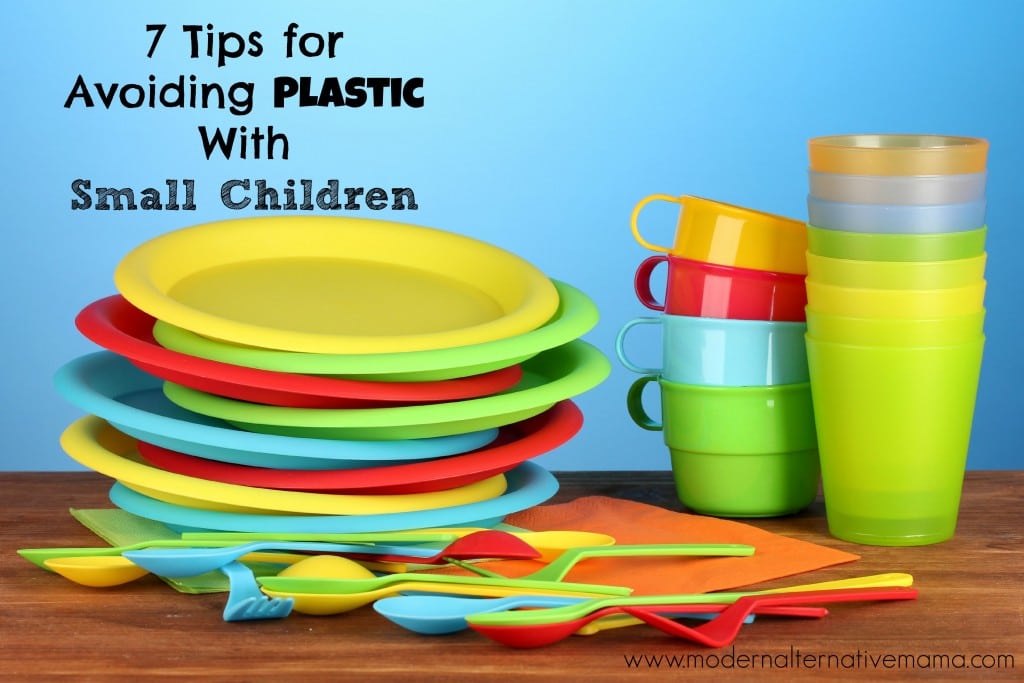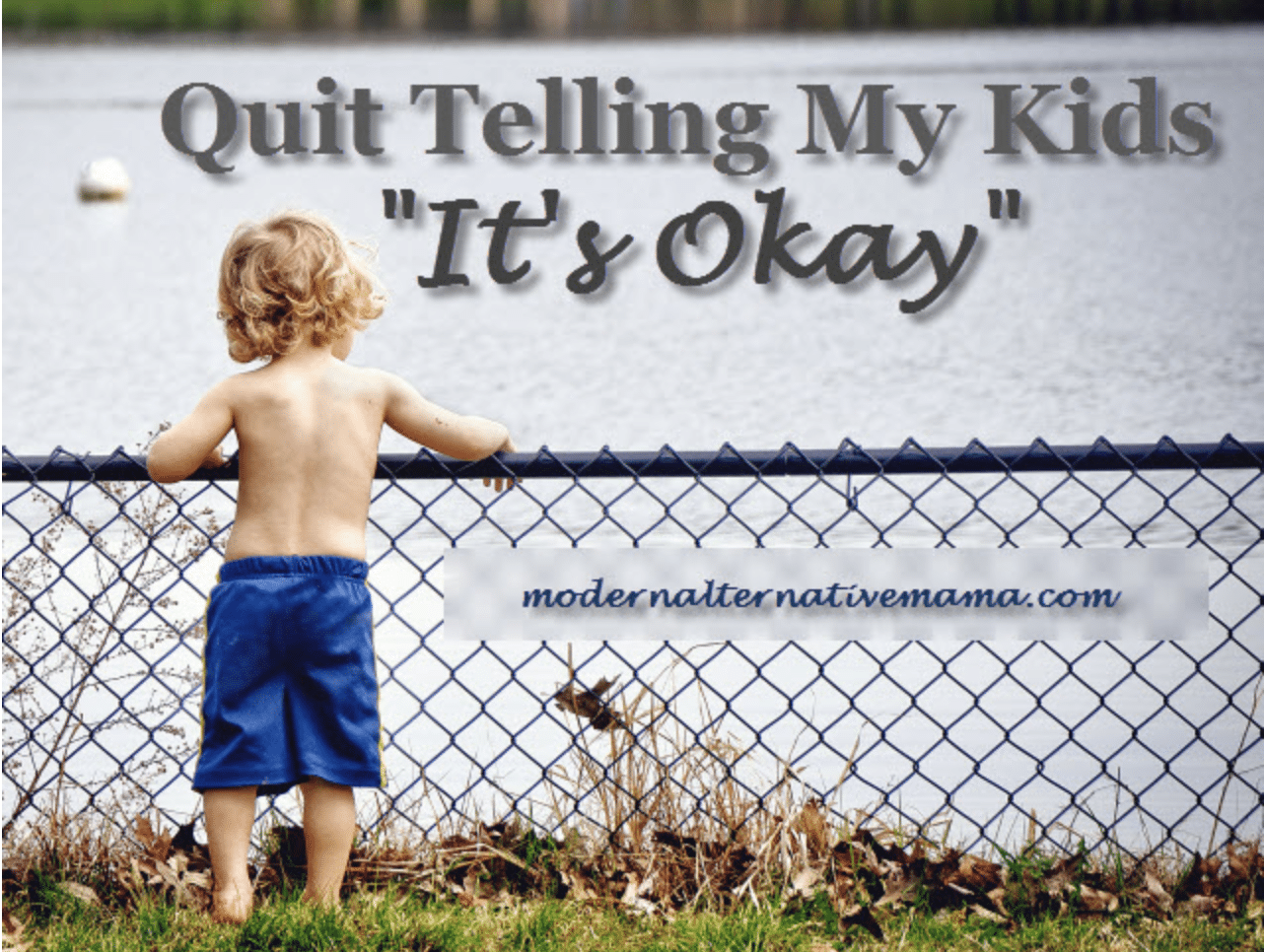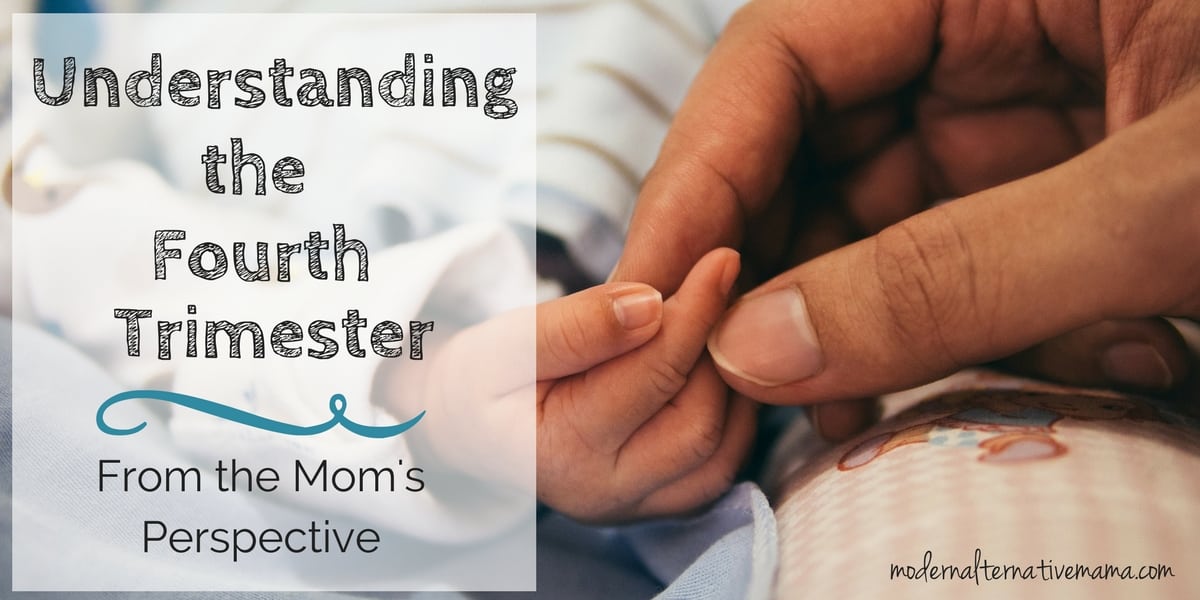When we moved to a new place about a year ago, I decided that we were done with plastic.
Okay, there’s still actually plastic in my home. Trash cans are plastic. Some toys are plastic. We even use plastic bags sometimes for food storage (but only limited types). But no more plastic dishes!!
We have small children, between 2 years and 7 years (and a 2 month old, who doesn’t yet use any dishes). It seems like the options would be kind of overwhelming in that case, because they’re either really expensive, or really breakable. Possibly both. Yet, we don’t break dishes too often and we didn’t break the bank, either. Want to know how?
7 Tips for Avoiding Plastic with Small Children
It really was convenient to have cheap plastic bowls and plates for the kids, when we did. It was. They were cheap and unbreakable (mostly — they don’t work so great as frisbees). But, plastic, when heated up or scratched, can leach chemicals into foods. Kids nearly always eat warm food and scratch the plates. Since so many of those chemicals are endocrine disruptors (read: messes with your hormones), I feel they’re best avoided.
As I mentioned above, we do still use plastic in very specific circumstances. It doesn’t matter for trash cans or toy bins, because nobody’s going to eat off it, it’s not going to get heated up, and it isn’t going to be filled with fatty foods or liquids. Those are kind of the using-plastic-rules in my home. Plastic bags are used for cool/cold food (often things I’ve frozen and transfer to bags to store) and never liquids or greasy things.
So! How to avoid it, without breaking the dishes or the bank?
1. Shop the thrift store
The number one thing we do with dishes — plates and bowls — is shop thrift or discount stores. We pick up ceramic or glass plates and bowls for $1 each, or less. This way, it doesn’t matter a whole lot if they do get broken. They’re not going to kill the budget. You can often find glass pitchers at thrift stores to store iced tea or special drinks in, or even just to have a pitcher of water at the table so you don’t have to get up and refill glasses 239590845 times during a meal.
As a side note, ceramic usually breaks more “safely” than glass does. That is, the edges aren’t as sharp, and there usually aren’t tiny shards that fly around and find your feet later. Unless the glass is good quality (which you can sometimes find at thrift stores), ceramic is a bit safer for plates or bowls.
2. Choose stainless steel
Stainless steel really helps, because it’s not breakable. It isn’t cheap, though, which is why we limit it to cups. We have a set of stainless steel cups (this one) that gets used only for meal times in the kitchen. The kids aren’t allowed to take open cups outside the kitchen because they spill too easily. If you have a lot of kids, you can use permanent markers to write kids’ names on these to cut down on how many you use per day.
Be aware that if dropped, stainless steel makes a lot of noise. I have jumped and thought that someone broke glass…when it was just a stainless steel cup falling.
3. Buy silicone sleeves
When you do use glass, purchase silicone sleeves to go on the outside of it. Many companies even make kids’ cups and bottles that come with the sleeves already (like this one). These pretty much prevent breakage if the glass is dropped, which is nice.
4. Mason jars solve everything
When it comes to glass, if we don’t have silicone on it, we use mason jars to drink. Some of ours have handles and are intended for drinking glasses, and some are just regular ol’ mason jars. This type of glass resists breakage more than other types, and they’re pretty cheap, too. I found the “drinking glasses” for around $1 each, and the regular jars for maybe $0.75/each. Even better, you can add some lids to them to turn them into a straw cup or sippy cup if you want! Try these.
5. Pad the floor (or change location)
I’d never have a tile floor with kids in the house.
Tile is just too hard. It makes glass and ceramic almost certain to break when dropped. If I had it in the kitchen (I don’t), I’d add a thick plastic mat to the floor under the table. It helps make the mess easy to clean, and it should help prevent glass and ceramic from breaking if dropped. Another idea is to sit kids in a carpeted room, with a plastic mat under it (again with the mess) to prevent breakage.
6. Water bottles are your friend
As I mentioned above, my kids are not allowed to take open cups outside of the kitchen. Or anything that can spill easily. So, each child has one really nice water bottle that they can carry around with them. They don’t spill and they even stay cold. We have these.
7. Search for products that don’t come in plastic
This one’s a little trickier, depending on where you live. Buying food that doesn’t come in plastic is ideal, but not always possible. Seek out brands that come in glass jars, or at least BPA-free cans. Buy from bulk bins and bring your own mason jars to fill instead of using plastic bags (just have them weighed at the service desk first; some places even offer a discount if you do this). You’ll notice over time that there is more in glass than you realize. You may have to pay more for it — that’s where local and bulk come in handy. And making/canning your own! But that’s information for another post.







For plates you could consider using corelle – it’s unbreakable (except for the ceramic mugs that come with the dishes ‘sets’). I can’t tell you the number of times I’ve dropped plates and bowls. I’m definitely glad those were the dishes on my wedding registry.
I avoid cheap cheramic dishes for the lead issue. I use fiesta ware plates which hold up to a lot of abuse and I don’t have to worry about the lead leaching into food.
I believe some stainless steel has an epoxy-resin lining. Many stainless water bottles are lined as well as the popular thermal travel tumblers. I do not believe the lining has to listed on the label. A tumble that is 100% stainless steel is still 100% stainless steel even when lined. How does one know which stainless steel products are free from this epoxy-resin?